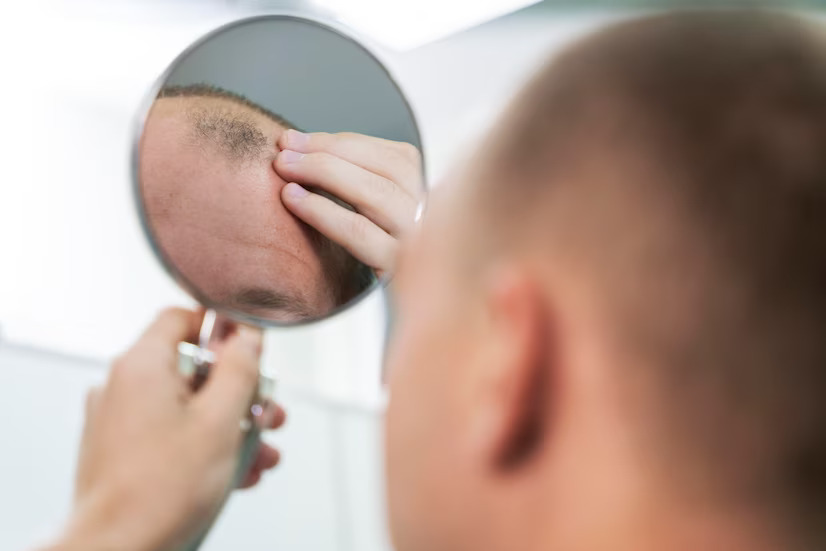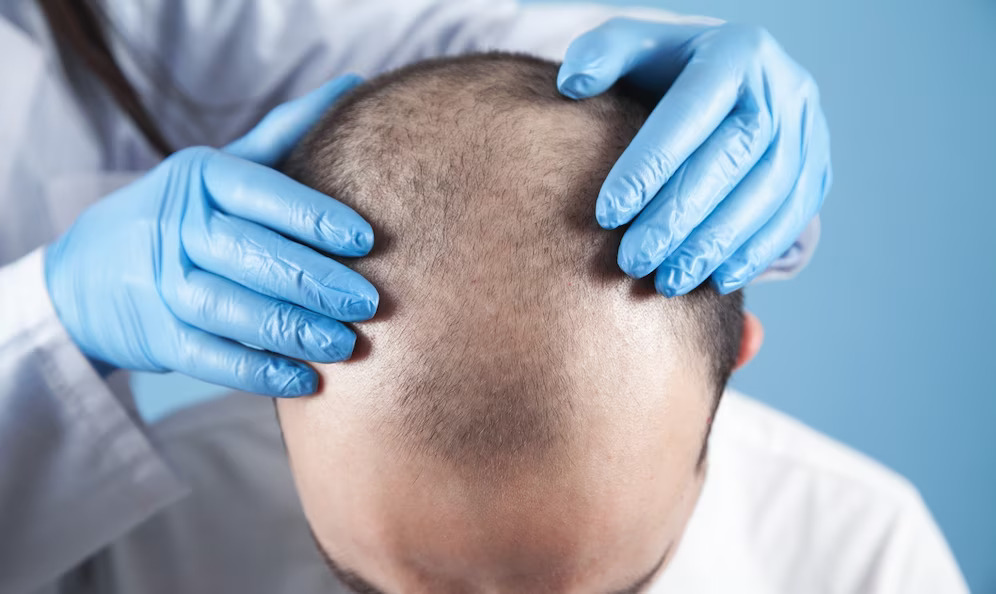- About Us
- Treatments
Skin Treatments
MenuMenuHair Treatments
MenuBody Treatments
Menu - Procedures
Aesthetics
MenuCosmetic Surgery
Menu - Training
- Products
- Gallery
- Contact Us
Androgenetic alopecia is a common form of hair loss in both men and women. In men, it is also known as male pattern baldness, and in women, it is also known as female pattern hair loss.
In men, hair is lost in a well-defined pattern, beginning above both temples. Over time, the hairline moves back (recedes) to form a characteristic “M” shape. Hair also thins at the top of the head (vertex or crown), often progressing to partial or complete baldness.
The pattern of hair loss in women differs from male-pattern baldness. In women, the hair becomes thinner at the top of the head, and the middle part widens. The hairline does not typically recede. Androgenetic alopecia in women rarely leads to total baldness.
A variety of genetic and environmental factors likely play a role in causing androgenetic alopecia. Although researchers are studying risk factors that may contribute to this condition, most of these factors remain unknown. Researchers have determined that this form of hair loss, particularly in men, is related to hormones called androgens, specifically an androgen called dihydrotestosterone (DHT). Androgens play a role in female pattern hair loss, but other factors that are not yet known are also involved.


The inheritance pattern of androgenetic alopecia is unclear, because many genetic and environmental factors are likely to be involved. This condition tends to cluster in families, however, and having a close relative with patterned hair loss appears to be a risk factor for developing the condition.

Book An Appointment